Julian grapes and features of caring for him
Grapes belong to the category of fruits that are characterized by their richness in minerals and vitamins. This is a very useful plant, the fruits of which have a beneficial effect on the human body. The yield of this plant depends on its variety. One of the high-yielding grapes is Julian.
Content:
Plant features
The plant of this variety belongs to the category table grapes:
- It ripens quickly enough (from 95 to 105 days from flowering to full appearance of ripe berries).
- This plant is blooming.
- The foot of the grape bunches is quite long.
- The bunches themselves are very similar in shape to the Rizamat grape variety.
This fruit is characterized by medium-soft and large enough bunches.
- The berries of this plant are pink. They are sausage-shaped. The size of one berry is 42-40x26-28 millimeters.
- The grape pulp is characterized by crunch and firmness.
- The berries of this plant have a harmonious taste and a thin skin that is not very noticeable while eating.
- This fruit is characterized by an excellent level of sugar accumulation.
- The shoots of this plant are capable of ripening very early to their full length.
Grape seedlings are able to form an excellent root system, which is characterized by vigor. If this crop is grafted, then the quality of its harvest will be much higher. To obtain a good harvest, this plant must be rationed by grones along its entire length.
Grape care
Julian grape trequires constant care... This will contribute to a timely and high-quality harvest with high rates.
In the spring, after the snow has risen and frosts have passed, it is necessary to systematically water the grapes:
- To do this, you need to dig pipes between the bushes.
- Four buckets of warm water must be poured into these devices, to which 0.5 liters of dry ash are added.
- This watering needs to be done only once. The second watering of the Julian grapes must be carried out a week before its flowering, and the third - after flowering.
- After the grapes begin to color, watering is prohibited.
- The fourth and rather important watering must be carried out in late autumn, a week before its shelter.
- To stop flowering and save it from getting under frost, when it is necessary to put stones at the bottom of the pit. They will accumulate cold and delay the awakening of this plant.
It is forbidden to water the grapes during flowering. This can cause flowers to fall and significantly reduce the yield.
In rainy weather, the flowering of Julian grapes can be delayed. That is why it is necessary to install a transparent visor over the grape bush. If this is not possible, then the grapes must be treated with a weak solution of boric acid.
In order to accelerate ripening vines and berries of this plant, you must perform the following procedures:
- Ringing. It must be produced in June. This procedure involves removing the bark ring on the shoot, which is characterized by the presence of fruits (3-5 millimeters wide). This process can speed up the ripening process of berries by 10 days.
- Collapsing the escape. The shoot is wrapped in a ring, which significantly speeds up the process of its maturation.
- Chasing.This is the process of removing the pagon, with the help of which the ripening process of the grapes of this variety is significantly accelerated.
- Twist the vine. This action is performed at the moment when the plant is almost fully ripe. This action has a positive effect on the ripening of pagons.
Proper care of Julian grapes will ensure its timely ripening, as well as increase its yield. That is why it must be cut, wrapped and watered in time.
Julian grape disease
Julian grapes are very poorly susceptible to disease. But still, they sometimes meet.
One of the most common grape diseases is mildew, which is popularly called pernosporosis.
This disease can affect the leaves and green shoots of the plant. The manifestation of the disease is carried out in the form of numerous yellowish spots. To prevent this disease, it is necessary to spray it in a timely manner.
Other diseases of Julian grapes:
- Another disease that can affect the green parts of grapes is called oidimum. Sprouted grape shoots are completely covered with mold. Julian grapes are susceptible to this disease in conditions of high humidity and temperature, which is +25 degrees. This disease can persist in grapes throughout the season. In order to get rid of it, it is necessary to spray them with a solution of colloidal sulfur, Topaz, ground sulfur, Tiovit-Jet, etc.
- A rather serious disease of Julian grapes is Alternaria. It develops in conditions of high temperature and high humidity. The leaves of the grapes are covered with light brown spots, and the berries become wrinkled and unpleasant to the taste. This disease can also spread to fruits during storage. Therefore, at the first signs of Alternaria, it is necessary to immediately subject the plant to treatment.
- Also, Julian grapes are susceptible to anthracnose, which spreads in rainy conditions. This disease can be distinguished by the brown dry spots on the leaves. This disease often damages young green shoots, as well as the combs of the brushes. In addition, this disease tolerates wintering well and may appear after winter. Therefore, when it is found, the Julian grape bush must be urgently processed.
Julian grapes require a warm and moderately humid environment.
Otherwise, he may develop a variety of diseases. Early detection of these diseases can help save the owner of the grapes in time.
The Julian grape is quite tasty fruits... This plant requires constant care and maintenance, but the taste of the fruit is worth it. To increase the volume of the harvest, it is necessary to properly care for the grapes and timely detect its diseases.



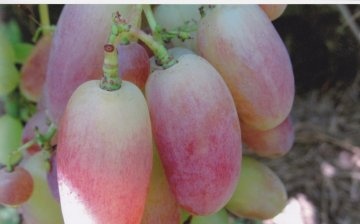
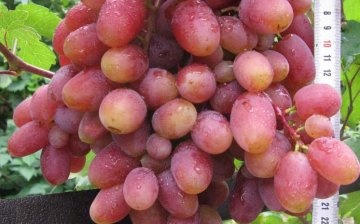
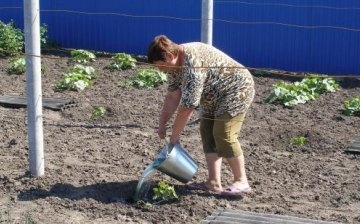
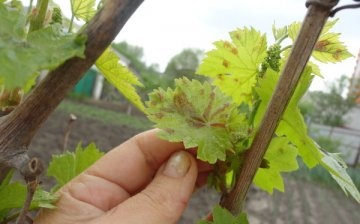




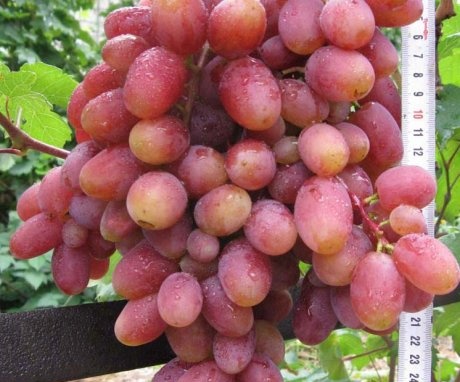
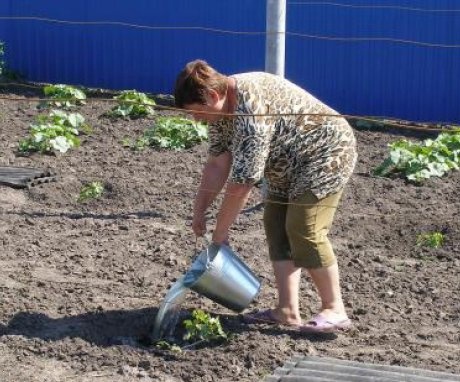
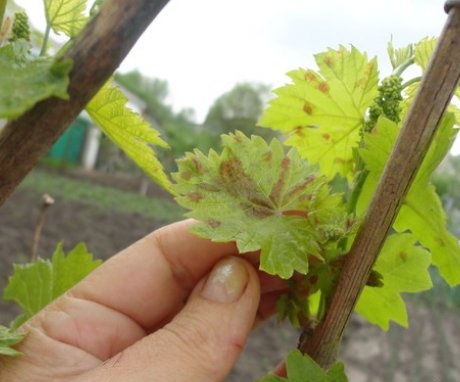
And I ate this grape, I was once treated to it, it is very sweet and tasty, sometimes I also meet it at the bazaar. You can safely start this variety, you will not regret it, there is no doubt about the taste.